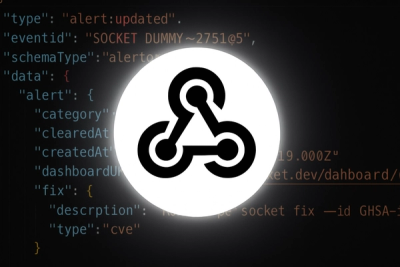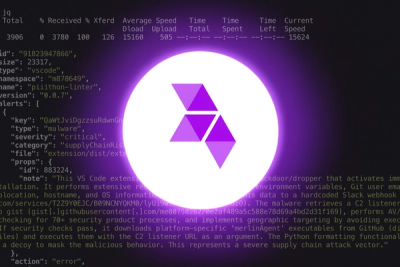
Product
Introducing Webhook Events for Alert Changes
Add real-time Socket webhook events to your workflows to automatically receive software supply chain alert changes in real time.
telegram-bot-bootstrap
Advanced tools
A bootstrap for Telegram bot with wrapped API and sample bot directly deployable to Heroku
A bootstrap for Telegram bot with directly deployable sample bot and JS-wrapped API methods.
See the full API documentation of this project.
If you wish to use only the wrapped Telegram API, do either of
npm install telegram-bot-bootstrap
git clone https://github.com/kengz/telegram-bot-bootstrap.git
Either way you'll get a module with the Telegram bot API wrapped in Node, and a bootstrapped, deploy-ready project.
If you haven't already, get a bot from BotFather and remember your bot token!
promises (uses q) for easy chaining and flow control.See the full API documentation of this project.
API.js contains the Telegram Bot API wrapped in Node. The methods will return a promise for easy chaining, and will take either a whole JSON, or multiple parameters for convenience. For the latter, everything will be serialized properly for you to send over a HTTP POST method.
If you wish to use just the API or test the bot methods, here's an example
var bot = require('telegram-bot-bootstrap');
var Alice = new bot(token);
Alice.getUpdates().then(console.log)
// → you'll see an update message. Look for your user_id in "message.from.id"
// Once you get your id to message yourself, you may:
Alice.sendMessage(your-id, "Hello there")
// → you'll receive a message from Alice.
.then(console.log)
// → optional, will log the successful message sent over HTTP
We distinguish the bot from the API: bot.js extends API.js, and will be the deployed component.
This whole project is bootstrapped and deploy-ready: all the details of HTTP and server stuff taken care of for you. I deploy this git project onto my Heroku and voila, my bot is alive.
In addition to the token, you'll need a webhookUrl. If you deploy your Node app to Heroku, then the webhookUrl is simply your Heroku site url. Set both of them in the .env file:
TIMES=2
PORT=8443
TOKEN=your-Telegram-bot-token
WEBHOOK=your-webhook-url
The sample available is an echo-bot. To make your bot do interesting stuff, head over to bot.js, under the handle method, start writing your own from below the Extend from here comment.
The bot inherits all the API methods, so you can simply call them for example by this.sendMessage.
The server is deployed in index.js, and a bot is constructed to handle all HTTP POST calls from Telegram.
I use Heroku. This shall work for any other services too. Once I'm done setting up, I do:
git push heroku master
And done. Start talking to the bot.
FAQs
A bootstrap for Telegram bot with directly deployable sample bot and JS-wrapped API methods.
The npm package telegram-bot-bootstrap receives a total of 26 weekly downloads. As such, telegram-bot-bootstrap popularity was classified as not popular.
We found that telegram-bot-bootstrap demonstrated a not healthy version release cadence and project activity because the last version was released a year ago. It has 1 open source maintainer collaborating on the project.
Did you know?

Socket for GitHub automatically highlights issues in each pull request and monitors the health of all your open source dependencies. Discover the contents of your packages and block harmful activity before you install or update your dependencies.

Product
Add real-time Socket webhook events to your workflows to automatically receive software supply chain alert changes in real time.

Security News
ENISA has become a CVE Program Root, giving the EU a central authority for coordinating vulnerability reporting, disclosure, and cross-border response.

Product
Socket now scans OpenVSX extensions, giving teams early detection of risky behaviors, hidden capabilities, and supply chain threats in developer tools.